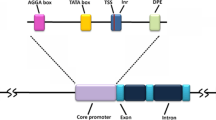Abstract.
The expression of many genes encoding transcriptional activators in prokaryotes and eukaryotes is upregulated through positive feedback activation. During positive feedback activation, a transcriptional activator binds to its own promoter and thus increases its own expression as well as the expression of its target genes. In the simplest case, increased levels of the transcriptional activator can be directly correlated with increased expression of its target genes. In this study, we present a gene expression system, designated feedforward loop (FFL) system, which makes use of this kind of positive feedback regulation for the expression of plant transgenes. We show in transient and stable transformation experiments that such a system is functional and that it can be used to obtain high level gene expression in plants. We also provide evidence that the transgene is ubiquitously expressed when using the FFL system. Finally, we discuss the possibilities of using FFL gene expression systems for applications in plant molecular genetics and biotechnology.
Similar content being viewed by others
Author information
Authors and Affiliations
Additional information
Electronic Publication
Rights and permissions
About this article
Cite this article
Schwechheimer, C., Corke, F., Smith, C. et al. Transactivation of a target gene through feedforward loop activation in plants. Funct Integr Genomics 1, 35–43 (2000). https://doi.org/10.1007/s101420000001
Received:
Accepted:
Published:
Issue Date:
DOI: https://doi.org/10.1007/s101420000001




